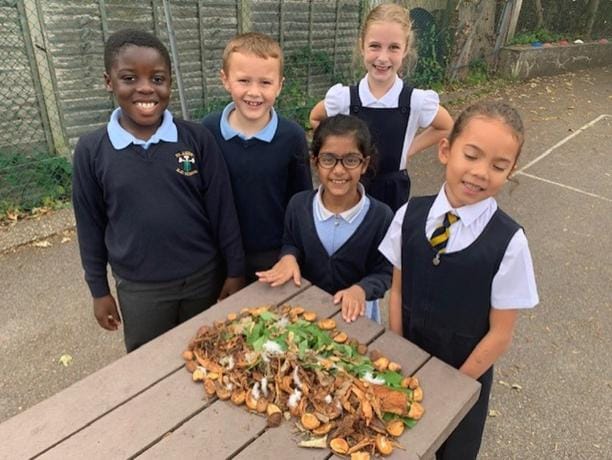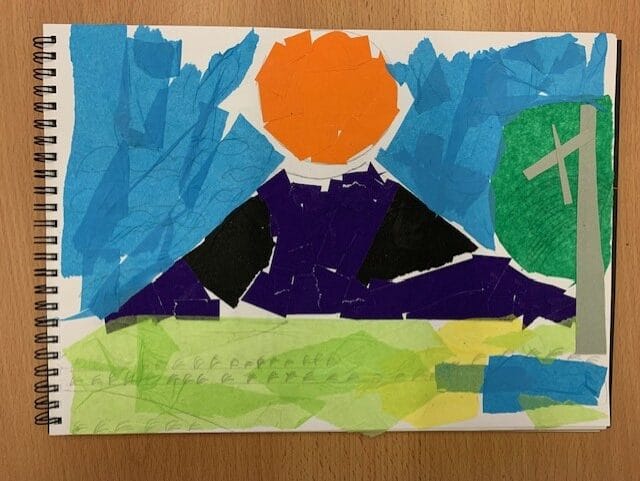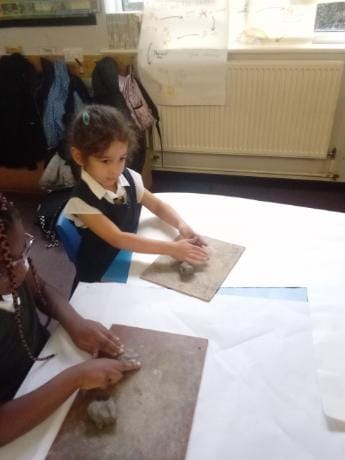Art
Intent
At St Anne’s Catholic Primary School, the intent of our Art curriculum is to foster creativity, self-expression, and appreciation for the visual arts through a Catholic lens. We aim to:
Nurture Creative Thinking: Encourage pupils to explore ideas and develop imaginative solutions through a variety of artistic mediums. Our curriculum is designed to ignite passion and creativity, allowing children to express their thoughts and beliefs in meaningful ways.
Develop Technical Skills: Provide comprehensive learning experiences that equip pupils with the skills to analyse, critique, and create diverse artworks. We offer a range of materials and techniques, from drawing and painting to sculpture and digital art, to ensure pupils achieve proficient artistic skills.
Promote Cultural Appreciation: Broaden pupils’ horizons by introducing them to a diverse range of artists, art movements, and cultural contexts. Through this, we aim to develop an understanding of art as a universal language that transcends boundaries while respecting individual cultures, particularly those within the Catholic tradition.
Embed Spiritual and Moral Values: Integrating our Catholic ethos, we seek to provide opportunities for pupils to reflect on their moral and spiritual development through art. This includes the exploration of themes such as compassion, community, and stewardship through art projects that connect to our faith.
Implementation
Our Art curriculum is carefully structured to ensure that it is consistently engaging, comprehensive, and reflective of our school’s values. The key components of our implementation strategy include:
Curriculum Design: Our curriculum is an adaptation of the scheme published by Kapow Primary which is designed with five strands that run throughout:
- Making: painting, drawing, printing, creating 2 & 3D art and crafting
- Generating ideas and taking inspiration from a range of artists and crafts people
- Formal elements: colour, form, line, pattern, shape, texture and tone
- Knowledge of art movements and key artists’ work and techniques
- Evaluating: critiquing their own work and that of others
Aspirational Learning Goals: Each year group has specific, progressive learning objectives that are aligned with the National Curriculum and Ofsted’s expectations for art education. Assessments are based on both formative and summative evaluations, focusing on skill acquisition, creativity, and conceptual understanding.
Experiential Learning: Throughout their school life, pupils participate in a variety of workshops, artist-led sessions, and school trips. This direct exposure to artistic practice provides inspiration and enhances learning by connecting theoretical knowledge to real-world experiences.
Inclusive Practices: Our curriculum is designed to be inclusive and is adapted for all learners, taking into account their diverse needs and backgrounds. We consistently promote an environment where all pupils feel valued, fostering both confidence and motivation in their artistic endeavours.
Cross-Curricular Links: Art lessons are integrated with other subjects, such as Geography, Science and RE, to enrich overall learning.
Catholic Social Teaching
Option for the Poor and Vulnerable: In Year 1, children create clay houses which helps them to reflect on the basic need for shelter and consider how we can support those without secure homes.
Stewardship: In Year 1, children look at The Tree of Life which inspires reflection on our connection to nature and the responsibility to protect the environment for future generations.
Participation: In Year 2, mapping the school encourages students to value their place in the community and understand the importance of everyone’s participation in a shared space.
Solidarity: In Year 3, children explore Ukigo-e art which introduces students to another culture and fosters global awareness and solidarity with others around the world.
The Common Good: In Year 4, children explore sculptures local to Caversham such as the Miawand Lion in Forbury Gardens. By sketching public art, pupils learn to value shared cultural heritage and understand how local spaces can serve the common good.
Subsidiarity: In Year 5, children create a digital stop animation based on The Tudors.
Learning about the Tudors through art helps students explore how different levels of authority and decision-making impact communities—key to the principle of subsidiarity.
Human Dignity: In Year 6, children create self-portraits, encouraging them to recognise their unique value and the dignity of every person.
Impact
The impact of our Art curriculum is measured through both qualitative and quantitative data. Indicators of our successful art curriculum include:
Increased Engagement and Creativity: Pupils demonstrate enthusiasm for learning in art, with increased participation in class activities, leading to a rich and vibrant art community within the school.
Progress and Achievement: Regular assessments indicate that pupils make significant progress in their artistic skills and understanding. Many pupils showcase their work in celebration assemblies, which builds their confidence and sense of pride in their achievements.
Cultural Awareness: Pupils develop a strong appreciation for both local and global artists, understanding the cultural significance of different art forms. This awareness is cultivated through discussions and reflections that align with Catholic teachings on respect for diversity.
Spiritual Development: Art becomes a medium for pupils to express their faith, values, and emotions, fostering a deeper spiritual connection. Feedback from both pupils and parents indicates that the Art curriculum enhances spiritual well-being and nurtures moral development.



